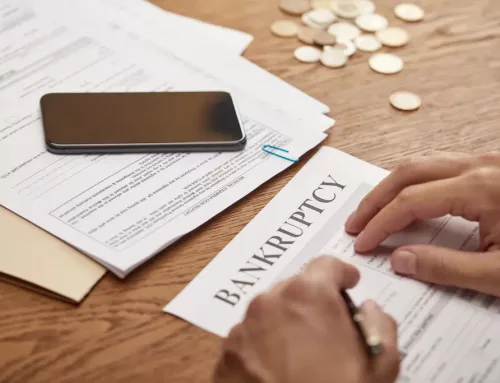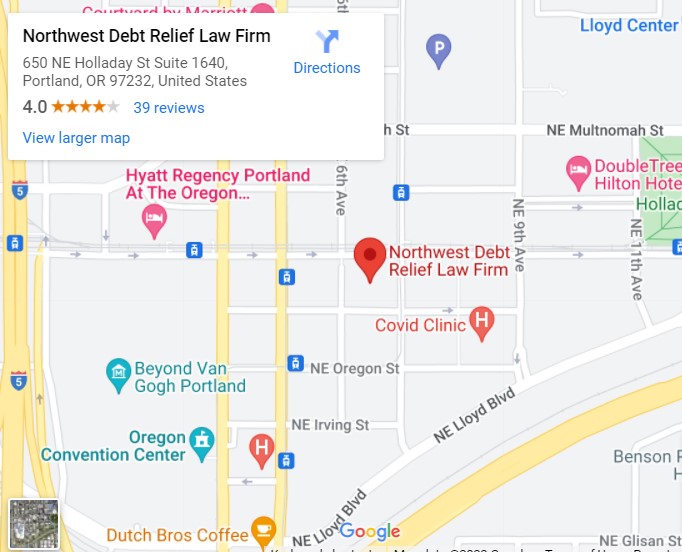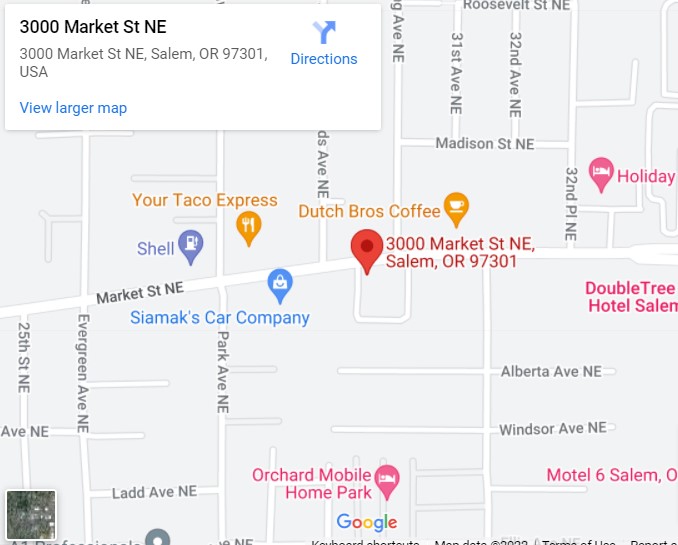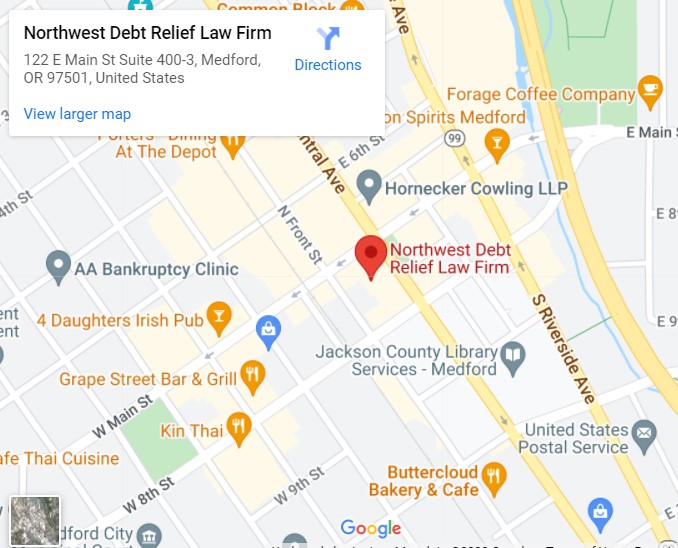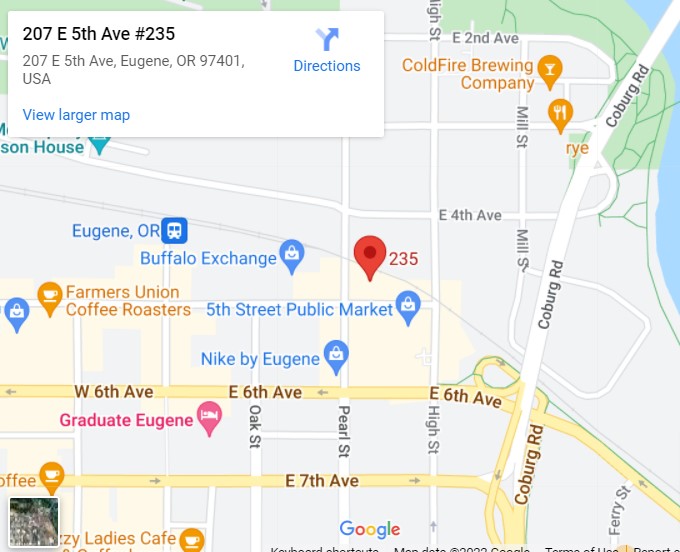Sometimes it’s helpful to have kind of a global or overhead view of a process before drilling down in into the particulars. What follows is a view of Chapter 7 bankruptcy in Oregon and Washington from 30,000 feet up. I mean that both figuratively and literally as I am writing this 30,000 feet above eastern Oregon on a flight into Portland. Anyway, here goes nothing.
First, before a bankruptcy can be filed with the court, you must complete a credit counseling course. Fortunately, this course can be completed on the phone and online, figure maybe forty-five minutes to get this done. Depending on your financial status, you may have to pay a fee, normally somewhere between fifteen and twenty-five dollars. When you have satisfactorily the course, you will receive a certificate of completion, which is valid for 180 days. If you use our provider, the provider will automatically send on a copy of the certificate to our offices.
After you complete the course, we work with you to prepare paperwork including the identities and addresses of your creditors and the amounts owed, descriptions of your property, your current expenses and income, a statement concerning your financial affairs and a statement of what you intend to do with the property you used as collateral to secure consumer debts. You must include all of the creditors that you know about, everyone goes in. You can opt to repay a debt to a family member or friend later, but they need to be completed.
We try to make the process of getting this paperwork put together as easy as possible. We can provide you with an online questionnaire, rather than the 70 page monstrosities that many firms are handing out these days for you to fill out by hand and then drop them off at their offices rather than just hitting the submit button. We have detailed lists of the documents that we are going to need to file your case and we provide you with those lists as soon as we are hired. We can often do prep appointments over the phone with you before you come in to file your case so that your time in our office(away from work and/or family) is minimized.
All of your information must be submitted on forms that have been approved by the court. They are filed with the United States Bankruptcy Court, along with the certificate of completion of the credit counseling course. You must also pay a filing fee to the court which is $335, but you need not pay this at the time of filing. Our office is happy to submit paperwork to the court so that your can get a few months to pay it off.
Your bankruptcy is effective the moment it is electronically filed with the court. Once your bankruptcy is filed, the court will notify every creditor that you listed in your petition that you have filed for bankruptcy. The court will also set a date, time and place for a hearing that is called either the section 341(a) hearing or the “meeting of creditors.”
The hearing is usually held somewhere between 28 and 36 days after your bankruptcy is filed. You must attend this hearing with us and answer questions under oath by the trustee and any creditors who appear. Creditors rarely appear. The questions are about your financial affairs, including your property, past earnings, past transactions, and the forms you have filed. Your case may be dismissed if you fail to attend as scheduled. These hearings generally are about five minutes long.
After your case is filed, our case managers will likely need documents from you to submit to the Chapter 7 Trustee. Failing to provide these documents in a timely manner can have major repercussions, including dismissal or having to come back for a second hearing. It is also critical that you bring photo identification and official proof of your social security number or your hearing will not be held.
The trustee who administers your hearing is appointed by the court. The trustee is obligated to determine whether you have properly completed all of the forms and listed all of your assets and your creditors.
It is also the trustee’s duty to take possession and sell any of your non-exempt property, to examine claims creditors may file and determine whether they are proper, and to distribute any proceeds of that property among your creditors. This rarely comes up for two reasons. First, the exemptions that are used to protected assets in both Oregon and Washington are actually extremely generous. Second, we screen for potential issues prior to the filing of your case.
You might be required to make further court appearances at the trustee’s request. Also, if anyone objects for any reason to you getting a discharge of all or part of your debts, we may have to appear in court on your behalf to defend your position. Again, in the vast majority of cases, these issues do not come up.
No more than forty-five days after your meeting of creditors, you must complete a second counseling course to be eligible for a discharge. This course is on personal financial management. It can be completed on the Internet or by telephone. This course generally costs between ten and twenty-five dollars, depending on who you use. If you do not timely complete this course and file the certificate of completion with the court, the court can close your case without discharging your debts.
During the entire bankruptcy process you must be honest and as accurate as possible in the information you put in your petition and with your answers to questions.
Please let me know if you have any questions at all about the bankruptcy filing process. The above overview is just that, an overview from 10,000 feet. If you want to drill down on a specific issue that worries you during the filing process, set an appointment with one of our attorneys in Portland, Salem or Vancouver. You can also book a video or phone appointment with me. We are here to help.




